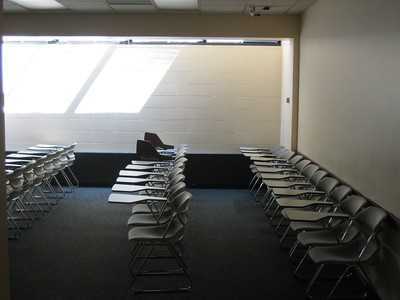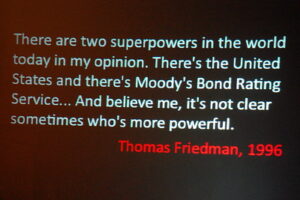Yesterday, I wrote about administrative bloat, as determined by five simple measures that compare various aspects of a higher education institution. Yesterday, I looked at two of them – the president’s compensation compared to the number of full-time-equivalent (FTE) students, and the president’s compensation compared to the number of full-time faculty.
In every case, the smaller the result, the more efficient the organization is. In WCC’s case, the numbers grow larger each year. I did not invent the measurements; I simply plugged in the data that Washtenaw Community College reported to the Internal Revenue Service and the Department of Education. The measures use 2021 data where available.
The first two measures indicate that the president is rewarded for enrollment declines and reductions in the professional teaching staff. Normally, a Board of Trustees genuinely manages the interests of the community would frown upon this, but WCC doesn’t have a normal Board of Trustees.
So, today let’s look at the other three measures to see how lean and efficient WCC is.
Administrative Bloat FTE Employees/FTE Students
The first measure up for consideration is the number of full-time equivalent employees versus the number of full-time-equivalent students. How many FTE employees does each FTE student support?
| Fiscal Year | FTE employees | FTE Students | Ratio |
|---|---|---|---|
| FY 2020 | 811 | 7,795 | .104041 |
| FY 2019 | 867 | 8,067 | .107475 |
| FY 2018 | 856 | 8,149 | .105044 |
| FY 2017 | 853 | 8,053 | .105923 |
| FY 2016 | 858 | 8,168 | .105044 |
In this case, the numbers remained relatively stable until 2019, when the number of FTE employees grew while the number of FTE students fell. In 2020, the pandemic reduced both the number of FTE students and FTE employees, so the ratio decreased slightly.
FTE Employees/FT Faculty
This table compares the number of FTE employees to the number of full-time faculty. As with the table above, the ratio stays relatively constant until 2020 and 2021, when the pandemic reduced the number of FTE employees relative to the number of full-time faculty.
This number is actually very descriptive. The full-time faculty are responsible for developing new programs and new classes. When an institution commits an increasing amount of payroll expense to non-instructional employees – those who do not (or cannot) generate revenue over those who do, it says something, especially when the administration spends time and money attempting to develop unrelated revenue sources. The easiest, most cost-effective way to generate more revenue is to hire more full-time instructors to build new academic programs.
| Fiscal Year | FTE employees | FTE Faculty | Ratio |
|---|---|---|---|
| FY 2021 | 811 | 156 | 4.782051 |
| FY 2020 | 811 | 161 | 5.037267 |
| FY 2019 | 867 | 164 | 5.286585 |
| FY 2018 | 856 | 163 | 5.251534 |
| FY 2017 | 853 | 162 | 5.265432 |
| FY 2016 | 858 | 162 | 5.296296 |
FTE Students/FT faculty
The last measure is a comparison of the number of FTE Students to full-time faculty. The table shows the impact of both the decline in the number of FTE students and the number of full-time faculty.
While WCC’s unduplicated headcount may have remained constant (or even rose a bit) during the last decade, there has been a downward shift in the number of full-time students, as well as the overall number of credit hours WCC students have taken. This lowers the number of FTE students. Since 2016, the number of FTE students per full-time faculty has dropped by 2 students, from 50.42 to 48.42.
Although it is good-ish that the ratio is reducing, 156 (2021) FT faculty are not enough to achieve and sustain innovation in academic programs. Normalizing the amount of full-time faculty on staff is critical to improving future enrollment.
| Fiscal Year | FTE Students | FT Faculty | Ratio |
|---|---|---|---|
| FY 2020 | 7,795 | 161 | 48.42 |
| FY 2019 | 8,067 | 164 | 49.19 |
| FY 2018 | 8,149 | 163 | 49.99 |
| FY 2017 | 8,053 | 162 | 49.71 |
| FY 2016 | 8,168 | 162 | 50.42 |
The numbers here describe the impact of over-administration at WCC. The Board must stop financially incentivizing the President when enrollment drops, or when full-time faculty leave. In fact, the Board should demand executive accountability when enrollment drops or when full-time faculty numbers decline.
If the WCC administration is serious about increasing enrollment (they’re not), there should be a concerted effort to hire more permanent professional faculty to develop new programs. The number of full-time faculty at WCC has not changed in decades.
That says something about the Administration’s commitment to delivering high-quality, contemporary career education to the residents of Washtenaw County.
Photo Credit: bourgeoisbee, via Flickr


















